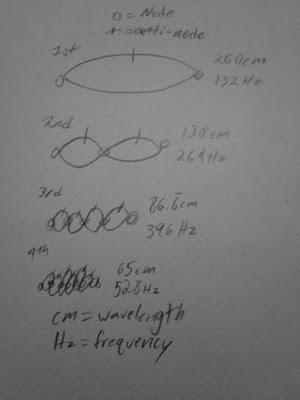General Concept In-Depth: Have you ever thought of a timer that would speed up music the closer it is to finishing, or maybe even one that literally speaks to you, saying something like "almost there" as it progress back down to that zero mark? Well with the Custom Audio Timer, also known as the CAT Clock, you can set up different markers for your timer to update you on. If you ever need to know when the half way point of something is, then the CAT Clock is for you. If you've ever wanted to put your favorite movie quote to tell you that your cake is done baking, then the CAT Clock is for you. But where exactly did the CAT Clock come from?
Well some of the earliest forms of time telling devices come in a glass, an hourglass to be precise. More than millennium and a half later, humans managed to make mechanical clocks, which either used clock work or pendulums, the latter being the earlier form of these conventional inventions. Digital clocks and timers followed by the 19th century, almost 200 years after the first official clock that we would know today. Digital timers are now so common, you've got 2 if not more of them in your own home. Fascinations aside, timers are a crucial part of organizing yourself. If it wasn't for timers, then I wouldn't know how long I would be making this video. Most people only consider the forwards flow of time, but when you're counting down to something, then it's much easier to keep track of as you're independently separating what you're doing from regional timezones or global affiliations with time.
Now what does the CAT Clock bring to offer that your standard clocks and timers probably don't have? Custom audio. Using a special app or possibly a bluetooth set up, maybe even USB, (this is only a conceptual product after all) you can program specific audio to play based on what percentage of time you have left on the clock. The clock itself is a circle shape, with a diameter of 3 inches. That means that the circumference is π times that diameter, which is approximately 9.42 inches squared. There's a panel in the back where you can set up how long you want the timer to go on for, whether it be 15 minutes, hours, or maybe you just want to hear how it works and put seconds. Whatever time you want, you can set it up with the digital panel in the back. If you also what the clock mode to speak out each day to you, you can record your own voice or set up a synthetic voice to speak out to you each day a regular alarm for you to wake is set. Speaking on that note, I found it interesting to figure out through research that "Sunday is, obviously named after the Sun and Monday is named after the Moon. Saturday is named after Saturn. The other days of the week are named after Germanic gods. Tuesday is named after Tiw the god of war. Wednesday is named after Woden the chief god. Thursday is named after Thor the god of thunder and Friday is named after the goddess Frig." according to Tim Lambert in his article of "A History of Clocks" on the Local Histories organization website. But while that's interesting, how does the main feature add to your general life convenience.
What extra benefits do you have with an incrementally notifying timer? Well for cooking, you may need to check things when they're about halfway done cooking or boiling, but way think about when you can precisely know halfway. Other benefits could be during a presentation, as the timer also vibrates, so if you have a portable version of it and set it up to vibrate as each third of the total time passes by, you can easily pace yourself as to how quick you may need to speak. All in all, this timer is supposed to feel personal. It is customizable after all, and with several settings on how it interacts with you via sound based on remaining time, it's supposed to be the best clock you ever got. Not to mention that the CAT Clock does indeed have an actual clock mode, as the name suggests, telling official time based on manual configuration. There's no downside to a personalized watch!
Sources (MLA Citations): Wikipedia contributors. "History of timekeeping devices." Wikipedia, The Free Encyclopedia. Wikipedia, The Free Encyclopedia, 25 Feb. 2016. Web. 21 Mar. 2016.
Local Histories, Tim Lambert, "A Brief History of Clocks and Calendars", 2012








